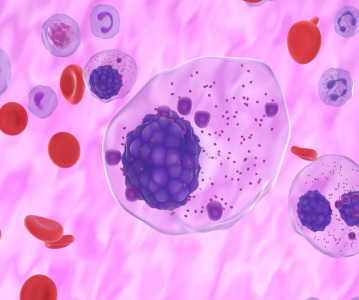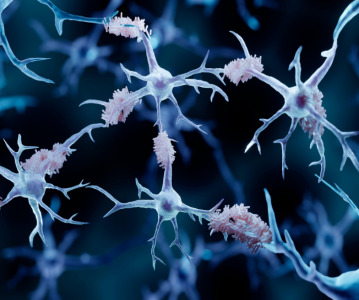Novartis Reports New Phase III Data
Novartis has announced late-breaking results showing omalizumab met all primary and secondary endpoints of a pivotal Phase III safety registration study in chronic spontaneous urticaria (CSU)[1], a chronic and debilitating form of hives with limited approved treatment options[2–4]. The data was presented for the first time at the European Academy of Allergy and Clinical Immunology-World Allergy Organization (EAACI-WAO) World Allergy and Asthma Congress 2013 in Milan, Italy. Omalizumab is not currently approved or indicated for CSU. Regulatory submissions for omalizumab in CSU are on track for later this year.
GLACIAL is the second of three pivotal Phase III studies that investigate the efficacy and safety of omalizumab in CSU. The study results supported the efficacy, safety and tolerability of omalizumab in patients with refractory CSU, a chronic and debilitating skin disease with intractable itch and hives[1]. Up to 40% of CSU patients fail on antihistamines, even those taking up to four times the approved dose[5]. Antihistamines, at the approved dose, are currently the only licensed treatment for CSU.
"This is encouraging news for people living with CSU, whose quality of life is greatly impacted by this serious disease and who currently have few treatment options," said Tim Wright, Global Head of Development, Novartis Pharmaceuticals. "Novartis is committed to doing all we can for these patients by working to develop an important advance in CSU treatment, where unmet medical need remains high."
Specifically, more than one third of omalizumab-treated patients in the GLACIAL study were completely itch- and hive-free by Week 12, compared with 5% of placebo-treated patients (p<0.001)[1]. During the same time period, the proportion of patients with well controlled CSU symptoms (itch, hives) was four times higher in the omalizumab group compared to placebo (52% and 12% respectively, p<0.001)[1]. The significant improvements observed with omalizumab were sustained throughout the treatment period up to Week 24[1].
The study also evaluated impact on quality of life, an important measure as up to 80% of patients with CSU suffer negative effects on their quality of life including sleep deprivation and psychological comorbidities such as depression and anxiety[6].
Omalizumab-treated patients also experienced a significant increase in the proportion of days free of deep tissue swelling, also known as angioedema (p<0.001)[1].
Omalizumab is being jointly developed by Novartis and Genentech, Inc. for CSU. Regulatory submissions for omalizumab in CSU are on track for later this year.
References
[1] Maurer M, Staubach P, Ashby M, et al. The safety and efficacy of omalizumab in chronic idiopathic/spontaneous urticaria (CIU/CSU): results from a Phase III randomized, double-blind, placebo-controlled study. European Academy of Allergy and Clinical Immunology-World Allergy Organization (EAACI-WAO) World Allergy and Asthma Congress annual meeting 2013. Late Breaking Poster. 25 June 2013, 12:00 pm.
[2] Asthma and Allergy Foundation of America (AAFA) website. "Chronic Urticaria (Hives)." http://www.aafa.org/display.cfm?id=9&sub=23&cont=328. Accessed 14 November 2012.
[3] American Academy of Allergy Asthma & Immunology (AAAAI) website. "Skin Allergy Overview." http://www.aaaai.org/conditions-and-treatments/allergies/skin-allergy.aspx. Accessed 14 November 2012.
[4] Casale T, Maurer M, Hsieh HJ, et al. Efficacy and safety of omalizumab in chronic idiopathic/spontaneous urticaria: results from a phase III, randomized, double-blind, placebo-controlled trial (ASTERIA II). American Academy of Allergy, Asthma & Immunology (AAAAI) annual meeting. 4611 Late Breaking Oral Abstract I. 25 March 2013, 2:30 pm.
[5] Sánchez-Borges M, Asero R, Ansotegui IJ, et al. Diagnosis and treatment of urticaria and angioedema: a worldwide perspective (position paper). World Allergy Organization Journal. 2012; 5:125–147.
[6] Maurer M, Weller K, Bindslev-Jensen C, et al. Unmet clinical needs in chronic spontaneous urticaria. A GA2LEN task force report. Allergy 2011; 66: 317–330.
Related News
-
News BioNTech to begin mRNA vaccine manufacturing in Rwanda by 2025
German biotechnology company BioNTech has stated their intentions to begin production at their mRNA vaccine factory in Rwanda by 2025, which will mark the first foreign mRNA vaccine manufacturing site on the continent of Africa. -
News Identifying Alzheimer’s Disease biomarker proteins with whole blood tests
A University of Manchester spin-out pharmaceutical company, PharmaKure, has reported successful study results for the quantification of Alzheimer’s Disease biomarker proteins with a whole blood test. -
News Bill & Melinda Gates Foundation to boost mRNA vaccine initiatives in Africa with USD $40m
To address vaccine inequality and accessibility issues, the Bill & Melinda Gates Foundation aims to deliver USD $40m to various biotech companies and vaccine manufacturers in support of mRNA vaccine development. -
News CPHI Podcast Series: Exploring neurological frontiers in Alzheimer's and beyond
The next episode of the CPHI Podcast Series delves into the science and background behind some recent developments in the field of Alzheimer's disease and neurological disorders. -
News Is patient centricity the future of pharmaceutical manufacturing?
In this interview with Sandra Sánchez y Oldenhage, President of PharmAdvice, she speaks to the importance of considering patients in the manufacturing stages of the pharmaceutical supply chain, and how it can redefine healthcare. -
News CPHI Podcast Series: How to leverage AI for Drug Discovery
Artificial intelligence is the topic of debate in the latest episode from the CPHI Podcast Series, where Digital Editor Lucy Chard speaks with Bill Whitford of DPS Group about the integration of AI in healthcare. -
News Pfizer forges ahead with blood cancer therapy after approval from FDA
Pfizer gains accelerated approval from the US FDA for their new bispecific antibody therapy for multiple myeloma, set to address an unmet need for patients. -
News Alzheimer's drug donanemab deemed effective in landmark clinical trial
Results from the TRAILBLAZER-ALZ 2 Randomised Clinical Trial into the use of donanemab to treat early symptoms of Alzheimer’s disease have been analysed.
Position your company at the heart of the global Pharma industry with a CPHI Online membership
-
Your products and solutions visible to thousands of visitors within the largest Pharma marketplace
-
Generate high-quality, engaged leads for your business, all year round
-
Promote your business as the industry’s thought-leader by hosting your reports, brochures and videos within your profile
-
Your company’s profile boosted at all participating CPHI events
-
An easy-to-use platform with a detailed dashboard showing your leads and performance







